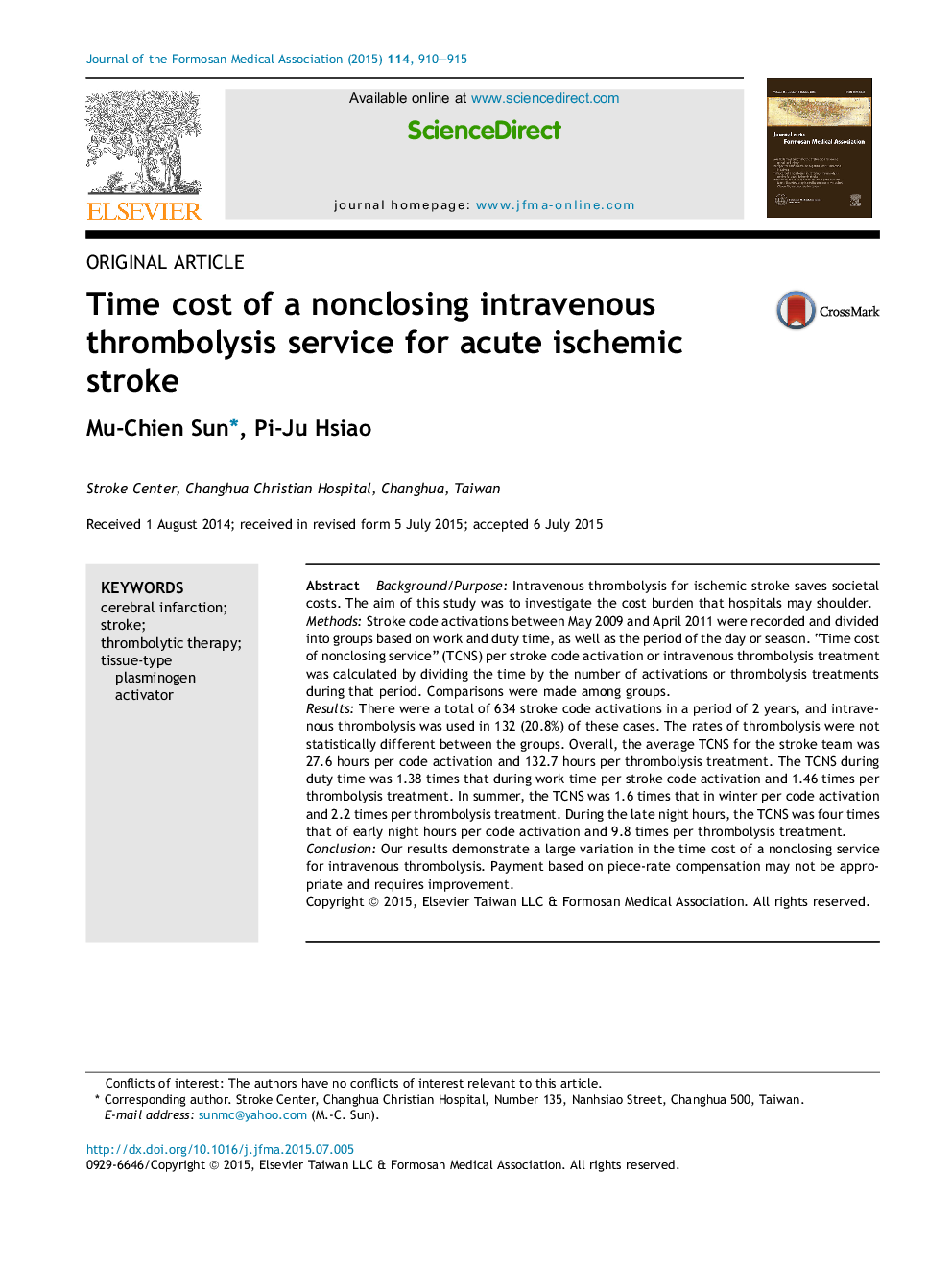| Article ID | Journal | Published Year | Pages | File Type |
|---|---|---|---|---|
| 3478511 | Journal of the Formosan Medical Association | 2015 | 6 Pages |
Background/PurposeIntravenous thrombolysis for ischemic stroke saves societal costs. The aim of this study was to investigate the cost burden that hospitals may shoulder.MethodsStroke code activations between May 2009 and April 2011 were recorded and divided into groups based on work and duty time, as well as the period of the day or season. “Time cost of nonclosing service” (TCNS) per stroke code activation or intravenous thrombolysis treatment was calculated by dividing the time by the number of activations or thrombolysis treatments during that period. Comparisons were made among groups.ResultsThere were a total of 634 stroke code activations in a period of 2 years, and intravenous thrombolysis was used in 132 (20.8%) of these cases. The rates of thrombolysis were not statistically different between the groups. Overall, the average TCNS for the stroke team was 27.6 hours per code activation and 132.7 hours per thrombolysis treatment. The TCNS during duty time was 1.38 times that during work time per stroke code activation and 1.46 times per thrombolysis treatment. In summer, the TCNS was 1.6 times that in winter per code activation and 2.2 times per thrombolysis treatment. During the late night hours, the TCNS was four times that of early night hours per code activation and 9.8 times per thrombolysis treatment.ConclusionOur results demonstrate a large variation in the time cost of a nonclosing service for intravenous thrombolysis. Payment based on piece-rate compensation may not be appropriate and requires improvement.
